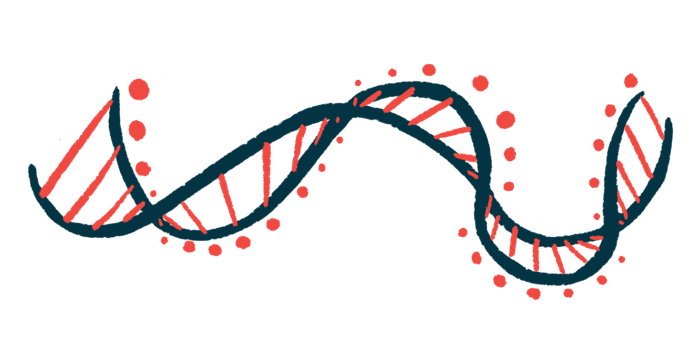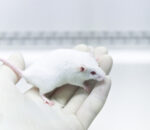Case Study: Novel CLN8 Mutation Combination Found in 2 Sisters
New gene mutation combo led to mild but atypical Batten disease
Written by |

Two young sisters who carry a unique combination of mutations in their CLN8 genes developed a mild, but atypical type of Batten disease, a case study reported.
Both sisters had different mutations in each of their CLN8 genes — one from their mother and the other from their father, an inheritance pattern called compound heterozygous.
The case study, “CLN8 Gene Compound Heterozygous Variants: A New Case and Protein Bioinformatics Analyses,” was published in the journal Genes.
Mutations in the CLN8 gene can cause the late infantile form of Batten disease, which occurs in children around ages 2 to 4. It is marked by seizures, and a loss of vision and motor and intellectual skills.
Epilepsy with progressive mental retardation (EPMR), sometimes called Northern Epilepsy, is a less severe form of disease caused by CLN8 defects, with the first signs appearing between the ages of 5 and 10. Symptoms include seizures, intellectual decline, and behavioral changes. The frequency of seizures tends to increase until puberty, at which point cognitive decline will become more rapid.
So far, at least 25 mutations in the CLN8 gene have been found to be implicated in diseases of the nervous system.
A new combination of CLN8 mutations
In this report, researchers in Israel describe the cases of two sisters who carry a novel combination of CLN8 mutations and developed mild but atypical disease features.
The parents of the two sisters were otherwise healthy but were second cousins: the mother’s grandfather and the father’s grandmother were brother and sister. Notably, other relatives had been diagnosed with diseases related to CLN8 defects, and two siblings in a local but unrelated family also had CLN8 disease.
The early development of the older sister, age 14, was normal except for a diagnosis of attention-deficit hyperactivity disorder (ADHD) at the age of 6. At age 8, she was admitted to the hospital due to epileptic seizures. Brain MRI and electroencephalogram (EEG), which measured the brain’s electrical activity, were normal.
She was treated with anti-seizure medication but started having absence seizures — brief, sudden lapses of consciousness. Although her EEG was normal, additional brain imaging showed mild atrophy (shrinkage) of the cerebellum, part of the brain that helps control movements.
Four months later, she started to experience learning difficulties and behavioral problems at school. By 11, sleep onset seizures emerged, and MRI showed further cerebellum shrinkage and other abnormalities. Eventually, her gait because unsteady, which worsened over time to become a full staggering gait by 13.
Her 12-year-old younger sister also reached early developmental milestones until the age of 7, when she was diagnosed with a learning disability and ADHD. Soon after, she had her first seizure without abnormal EEG findings but with mild cerebellar atrophy.
Months later, she had difficulties walking but had yet to develop a staggering walk or other neurological signs.
Genetic analysis of the two sisters revealed two different mutations in each of their CLN8 genes, one inherited from their mother and the other from their father. One mutation, inherited maternally, was previously identified locally, while the other, inherited paternally, was previously unreported and considered disease-causing.
Further genetic tests showed that each parent carried a different CLN8 mutation, but both were unaffected.
“We concluded that these compound variants in the CLN8 gene are most likely the cause of this atypical clinical presentation of CLN8 disease,” the researchers wrote.
To understand the impact of these mutations, the team conducted modeling studies on the protein encoded by the CLN8 gene. Although little is known about the structure and function of the CLN8 protein, it is thought to be involved in protein production, processing, and transport.
The previously identified maternal CLN8 mutation resulted in a change from a glutamine amino acid to a glutamate amino acid, both building blocks of proteins, at position 256. Modeling suggested that this change, which introduced a negative electric charge in an essential part of the protein, affects the protein’s stability or its interactions with other molecules.
The paternal CLN8 mutation resulted in a tyrosine amino acid changing to a cysteine amino acid at position 158 of the CLN8 protein. However, the impact of this change on protein function was less clear.
“We report a new case study of two patients (female siblings) who have atypical clinical features of CLN8 disease,” the authors wrote, “caused by a novel compound heterozygous variant at the same gene.”
“The cases in our study confirmed and expanded the effect of compound heterozygous variants in CLN8 disease,” they added.
The researchers noted that there is a high rate of consanguineous marriages — unions between related people — in the area where this family lives.
“Therefore, we recommend performing carrier screening of the CLN8 gene variant, as well as the implementation of genetic counseling as a preventive measure, particularly in this village,” they concluded.





